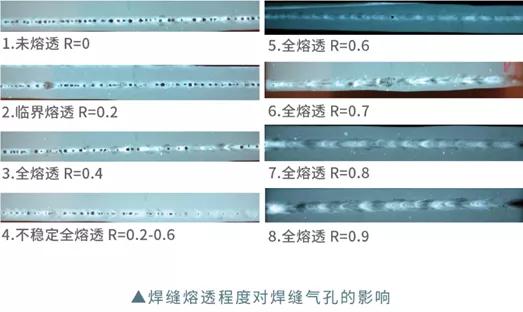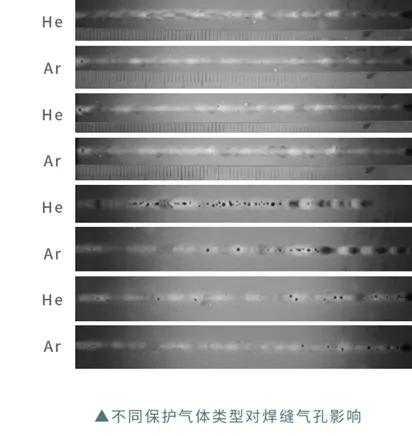Welding process: generation and avoidance of bubbles
Dec 01, 2023Why do pores appear?
The inside of the laser welding hole is in an unstable vibration state. The flow of the hole and the molten pool is very violent. The metal vapor inside the hole erupts outward, causing a steam vortex at the opening of the hole, which draws the protective gas (Ar) into it. At the bottom of the hole, as the hole moves forward, these protective gases will enter the molten pool in the form of bubbles. Due to the extremely low solubility of Ar and the rapid cooling rate of laser welding, the bubbles have no time to escape and are retained in the weld, forming pores. Also caused by poor protection. During the welding process, nitrogen invades the molten pool from the outside. The solubility of nitrogen in liquid iron is very different from the solubility of nitrogen in solid iron, so during the cooling and solidification process of the metal. Since the solubility of nitrogen decreases with the decrease of temperature, when the molten pool metal cools to start to crystallize, the solubility will drop sharply and suddenly. At this time, a large amount of gas will precipitate to form bubbles. If the floating speed of the bubbles is less than the metal crystallization speed, a bubble will form. pores.
Laser fusion welding method to suppress pores
1. Suppress the generation of welding pores through appropriate pre-welding surface treatment methods
Pre-welding surface treatment is an effective method to control metallurgical pores in aluminum alloy laser welds. Usually surface treatment methods include physical and mechanical cleaning and chemical cleaning.
After comparison, the process of chemically treating the test plate surface (metal cleaning agent cleaning-water washing-alkali washing-water washing-acid washing-water washing-drying) is the best. Among them, alkali washing uses 25% NaOH (sodium hydroxide) aqueous solution to remove the surface thickness of the material, and pickling uses 20% HNO3 (nitric acid) + 2% HF (hydrogen fluoride) aqueous solution to neutralize the residual alkali solution. The surface of the test plate shall be welded within 24 hours after treatment. If the test plate stays for a long time after treatment, it must be wiped with absolute alcohol before assembly before welding.
2. Suppress the generation of welding pores by adjusting welding process parameters
The formation of weld pores is not only related to the surface treatment quality of the weldment, but also related to the welding process parameters. The influence of welding parameters on weld pores is mainly reflected in the weld penetration, that is, the impact of the weld back width ratio on pores. The weld back width ratio refers to the ratio of the weld penetration to the weld width.

It can be seen from the test that when the back width ratio of the weld seam R>0.6, the concentrated distribution of chain pores in the weld can be effectively improved. When the back width ratio R>0.8, the existence of large pores in the weld can be effectively improved and to a great extent. Eliminates the remaining pores in the weld.
3. Suppress the generation of welding pores by correctly selecting the appropriate shielding gas and flow rate
The selection of shielding gas directly affects the quality, efficiency and cost of welding. During the laser welding process, the correct injection of shielding gas can effectively reduce weld porosity.

As shown in the picture above, Ar (argon gas) and He (helium gas) are used to protect the weld surface. During the aluminum alloy laser welding process, Ar and He ionize the laser to different degrees, resulting in different weld shapes. The results show that the overall porosity of the weld obtained by selecting Ar as the shielding gas is less than that of the weld obtained by selecting He as the shielding gas.
At the same time, we should also note that if the air flow is too small (<10L/min), the large amount of plasma generated by welding cannot be blown away, making the welding pool unstable and increasing the probability of pore formation. When the gas flow rate is moderate (about 15L/min), the plasma is effectively controlled, and the protective gas plays a very good role in preventing oxidation in the solution pool. At this time, the pores are the least. Excessive air flow is accompanied by excessive gas pressure, which causes part of the protective gas to mix into the interior of the solution pool, causing the porosity to increase.
Affected by the properties of the material itself, the phenomenon of welding without porosity cannot be completely avoided during the welding process, and the porosity can only be reduced.